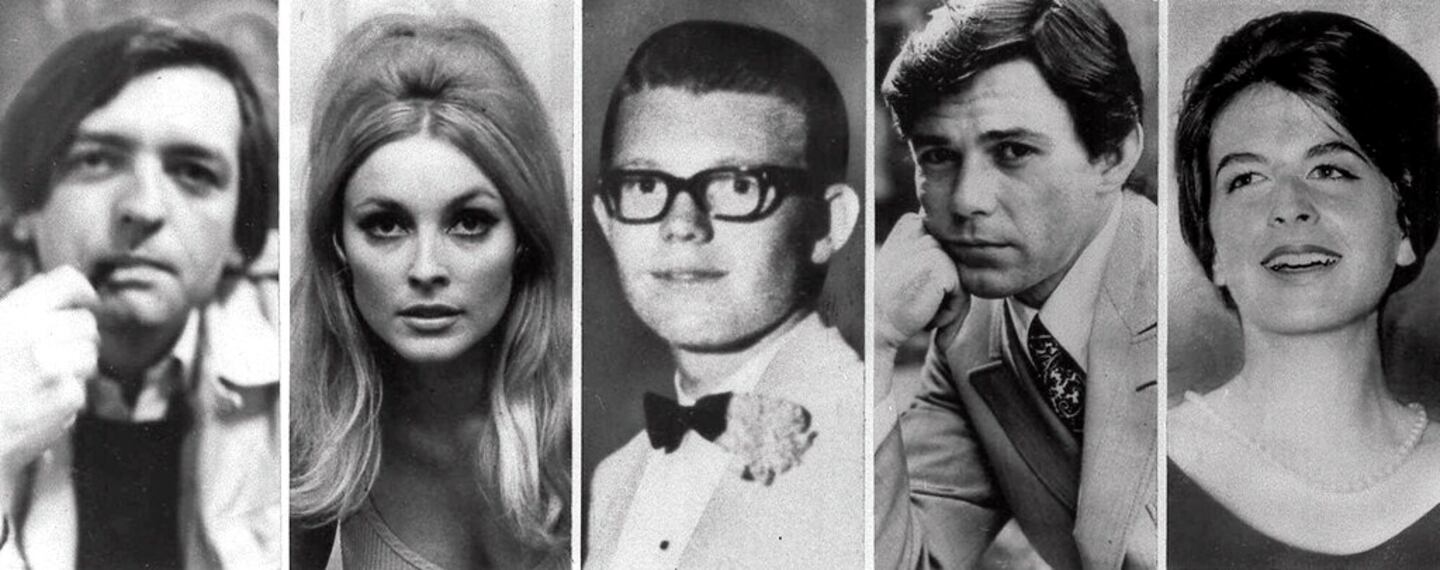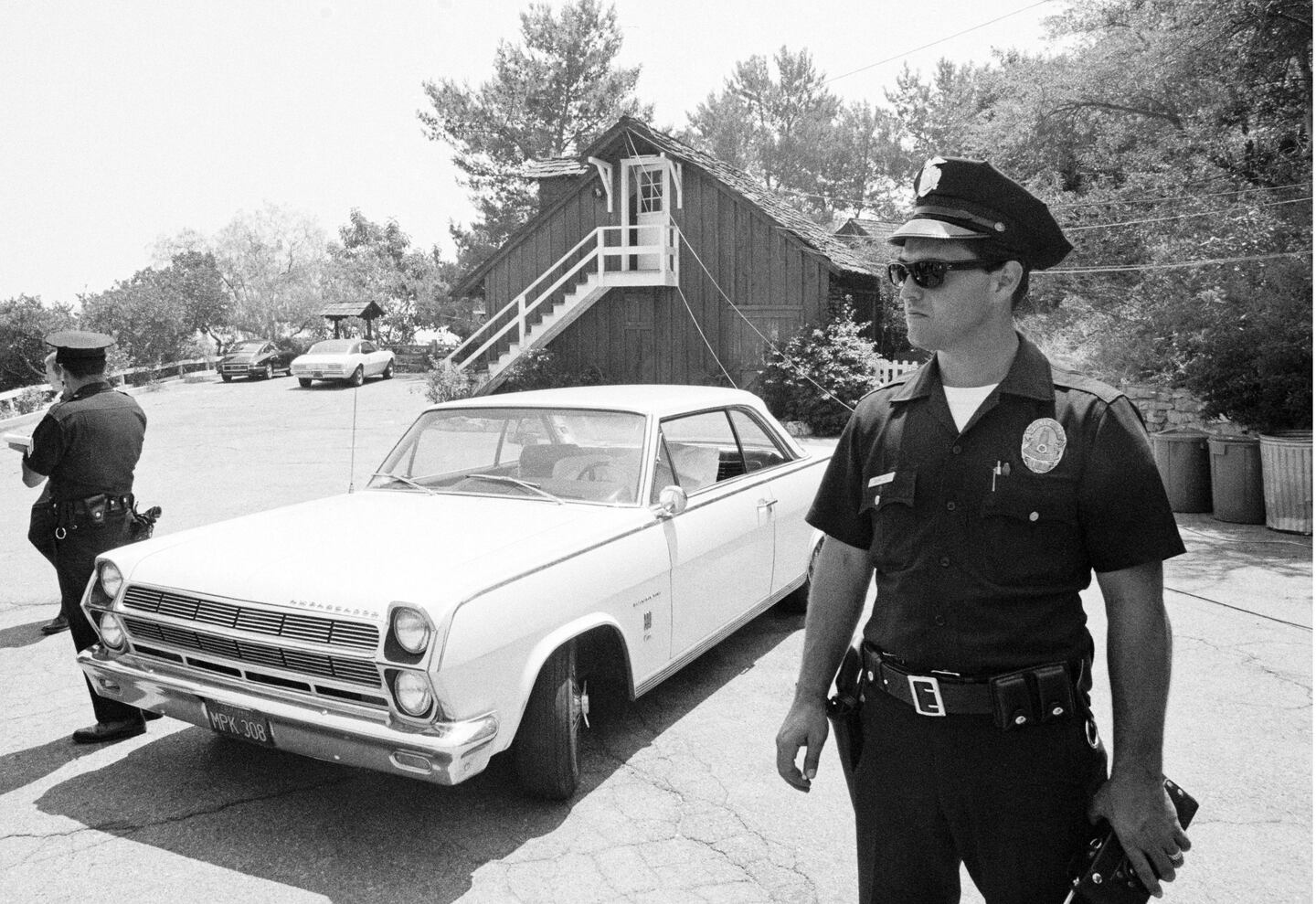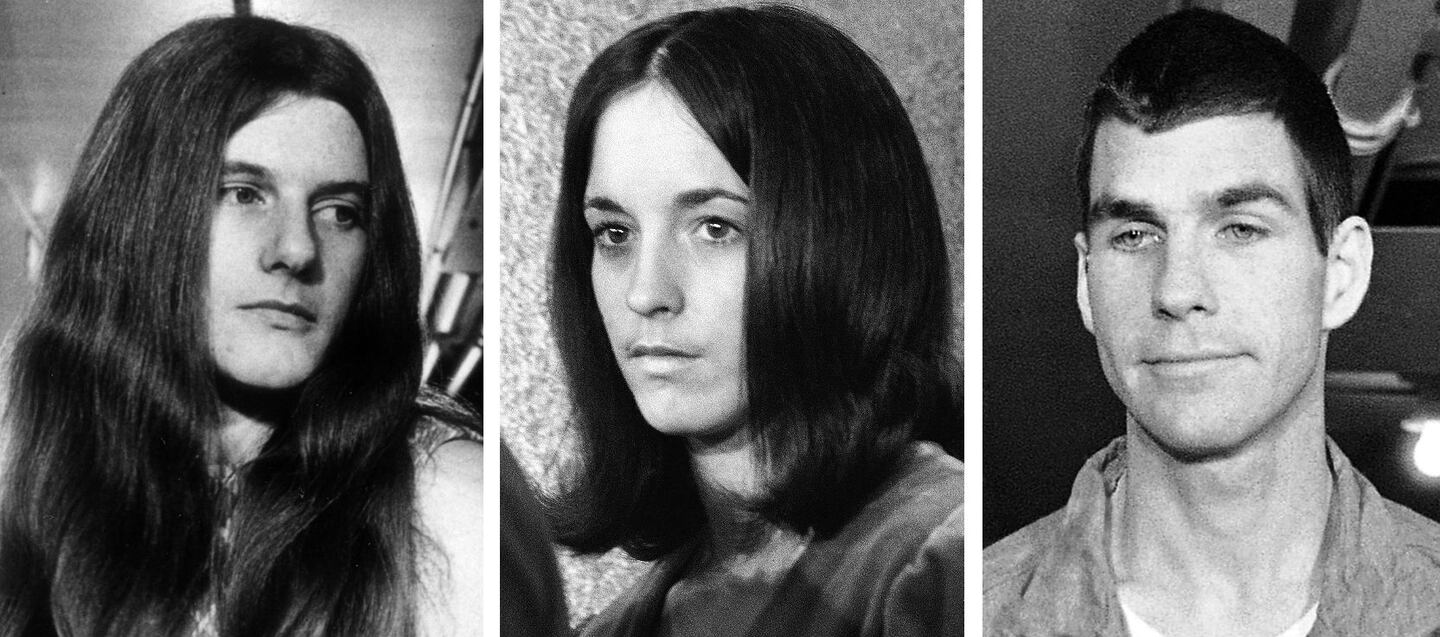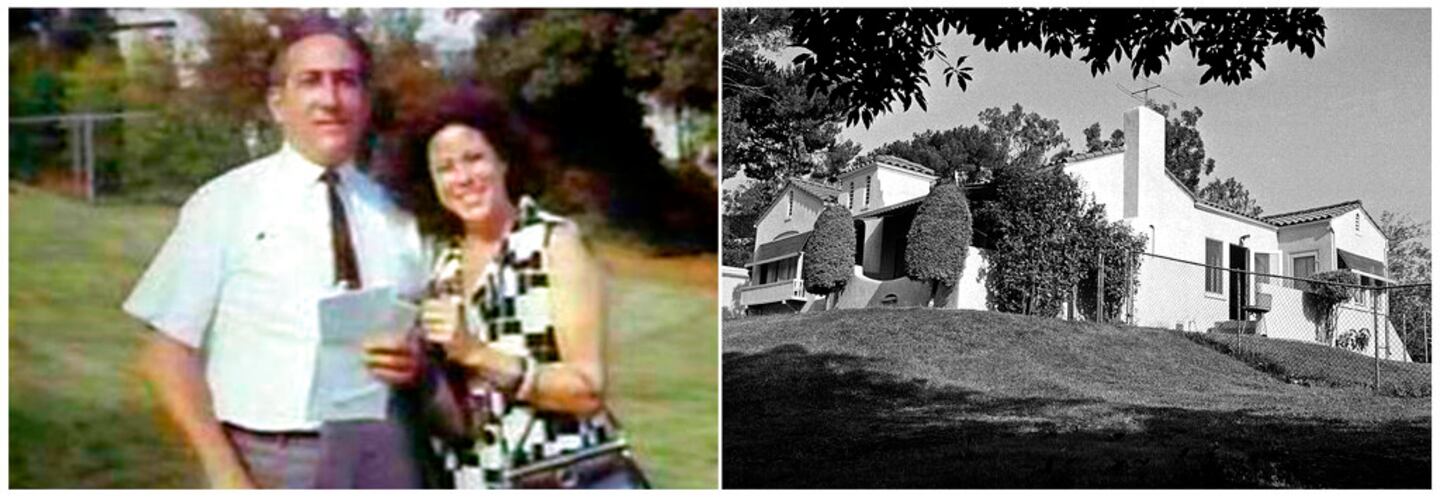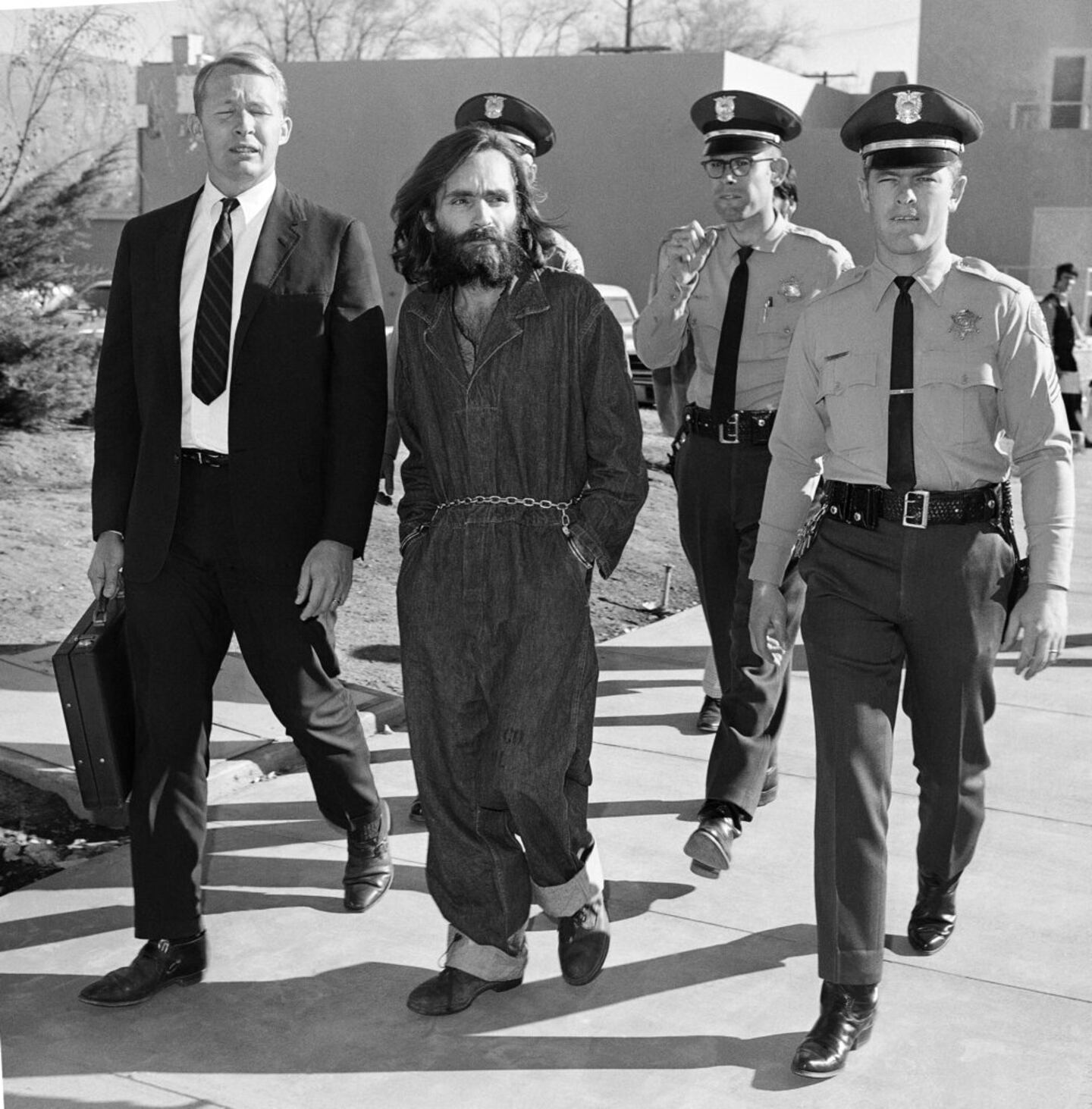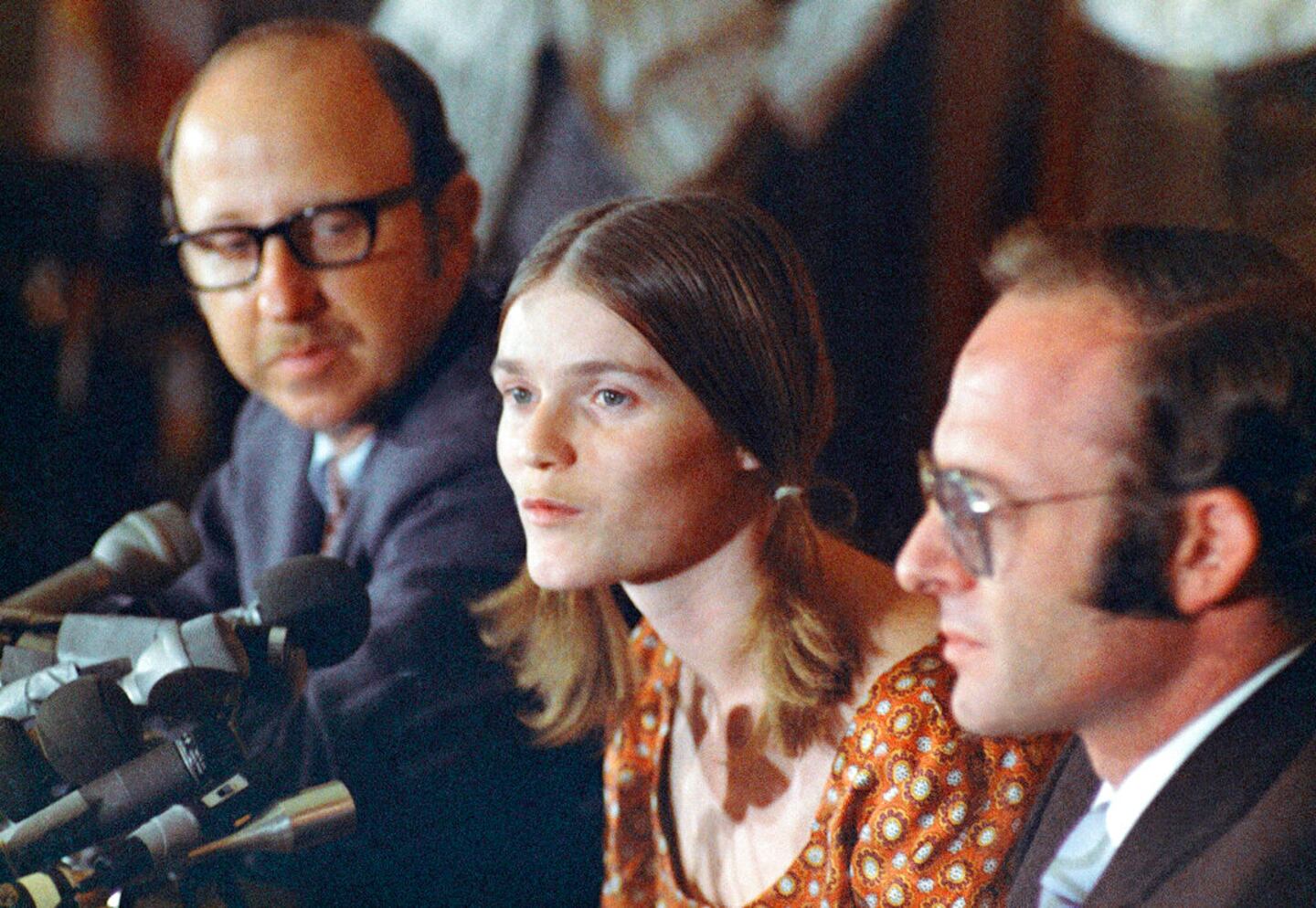LOS ANGELES — Warning: The following story contains graphic details of the murders ordered by Charles Manson on Aug. 9 and Aug. 10, 1969.
The occupants of 10050 Cielo Drive in California's Benedict Canyon, far above the lights of Los Angeles, were enjoying a quiet summer night 50 years ago when a car slowed, then stopped, near the front gate.
As actress Sharon Tate, the pregnant wife of film director Roman Polanski, and her guests -- celebrity hairstylist Jay Sebring, coffee heiress Abigail Folger and Folger's Polish boyfriend, Polanski friend Wojciech Frykowski -- relaxed inside, one of the car's occupants, a man named Charles "Tex" Watson, climbed a telephone pole and cut the phone lines to the house.
It wa shortly after midnight on Aug. 9, 1969, when Watson and his companions, Susan Atkins, Linda Kasabian and Patricia Krenwinkel, climbed an embankment onto the property, which Polanski and Tate had recently rented from owner Rudi Altobelli. Polanski was not home; he was working on a film in Europe, so Folger and Frykowski, who had been housesitting for the couple, were staying with Tate until he returned.
As Watson and the women moved toward the house, they spotted an AMC Rambler coming down the driveway. Watson, armed with a buck knife and a pistol, halted the vehicle.
Inside was 18-year-old Steven Parent, who had stopped by to visit the home's caretaker, William Garretson, who lived in the guest house. Parent had hoped to sell Garretson, a casual acquaintance he'd recently picked up hitchhiking, a clock radio.
According to "Helter Skelter," a book Manson family prosecutor Vincent Bugliosi wrote about the case, Parent begged for his life.
"Please don't hurt me. I won't say anything," Parent said, according to trial testimony from Kasabian.
Watson slashed at Parent with the knife, slicing through the palm of the teen's hand and severing the band on his wristwatch. He then shot him four times, killing him.
>> Related story: Manson family murders: Victims, their killers, where they are now
‘I'm the devil, and I'm here to do the devil's business'
Watson and the women, who hid in some bushes as Parent was slain, continued up to the house, where Watson cut a window screen to get into the house. Once inside, they stood over Frykowski, who had dozed off on the couch.
Watson kicked him in the head, at which point a dazed Frykowski asked who the intruders were.
"I'm the devil, and I'm here to do the devil's business," Watson told him, according to trial testimony.
Atkins and Krenwinkel found Tate and Sebring chatting in the master bedroom and Folger in a guest bedroom, where she was reading.
Atkins would later say that Folger smiled and waved at her as she passed the open bedroom door, assuming she was a friend of one of the others in the house.
The women forced the trio at knifepoint into the living room.
Over the next several minutes, as Kasabian kept watch outside, Watson, Atkins and Krenwinkel bludgeoned, stabbed and shot Sebring, Folger, Frykowski and Tate, whose unborn son was due in a couple of weeks.
Kasabian testified at the others' murder trial that Folger and Frykowski, both already seriously wounded, ran outside into the yard, where Watson and Krenwinkel followed them and continued stabbing them.
The killers would later say Folger told Krenwinkel, "I give up, you've got me. I'm already dead."
Police who arrived the next morning after Tate's housekeeper found the bodies said Folger's white nightgown had turned crimson with blood. Crime scene photos show the brutality with which the couple was slain.
Atkins reportedly killed the pregnant Tate as she begged for her life and for that of her unborn son, who was to be named Paul Richard Polanski. She pleaded to be allowed to live long enough to give birth.
"Woman, I have no mercy for you," Atkins responded, according to her own testimony, before fatally stabbing Tate.
Tate was found the next day curled into a fetal position on the living room floor, a rope leading from her body, over a beam and to Sebring's body sprawled nearby. A towel covered Sebring's head.
Before the killers left the Tate-Polanski home, Atkins dipped a piece of cloth in Tate's blood and used it to write the word "PIG" on the front door.
After the murders, the women changed their bloody clothing as Watson drove. They stopped outside a nearby home and used a water hose to wash the blood from their skin, then tossed their soiled clothing and the murder weapons from the car window as they fled.
The gun, which had a broken grip, was later found by a 10-year-old boy who lived near the Tate residence and turned over to police. The broken grip matched a piece of grip found at the crime scene.
It was believed to have come off as Watson pistol-whipped the victims.
A local ABC news crew found the bloody clothing several months into the investigation, after Manson family members were implicated in the slayings.
‘Helter Skelter'
The killers went back to Spahn Ranch, an old movie set where Charles Manson and his followers were staying. There, Watson told Manson, a self-styled guru who convinced his followers he was Jesus Christ, how the murders went.
He told Manson "basically what we had done," Atkins testified, according to Bugliosi's book. "That it all happened perfectly. There was a lot of -- it happened very fast -- a lot of panic, and he described it. 'Boy, it sure was Helter Skelter.'"
"Helter Skelter," according to Bugliosi, was Manson's vision of an apocalyptic race war that he wanted his followers to help him start. His scenario involved committing several high-profile murders that would be blamed on black men. He anticipated his group coming out as leaders in the aftermath of the subsequent battle.
The term "Helter Skelter" was taken from a song by the Beatles, with whom Manson was obsessed with. Acquaintances said Manson repeatedly played the group's "White Album," believing there were messages hidden within the songs.
The night after the murders on Cielo Drive, Manson, Watson, Atkins, Krenwinkel, Kasabian and another of Manson's followers, Leslie Van Houten, drove to 3301 Waverly Drive in the Los Feliz neighborhood of Los Angeles. Inside were the homeowners, supermarket chain owner Leno LaBianca and his wife, Rosemary.
As the group waited in the car, Manson went to the house. When he returned, he told Krenwinkel and Van Houten to go with Watson.
"He said, 'Tex, Katie, Leslie, go into the house. I have the people tied up. They are very calm,'" Atkins testified, according to Bugliosi's book.
Manson told the group he reassured the LaBiancas they would not be harmed to keep them from panicking like the victims did the night before, Atkins said.
She said Manson instructed the group to kill the couple and to "paint a picture more gruesome than anybody had ever seen."
Manson left the trio on Waverly Drive, and taking Rosemary LaBianca's wallet with him, he drove with Atkins and Kasabian into a predominantly African-American part of town and planted the wallet in a gas station bathroom, hoping the murders would be blamed on black assailants.
Meanwhile, Watson, Krenwinkel and Van Houten separated the LaBiancas, placing Rosemary in the master bedroom and Leno in the living room. Both had pillowcases secured over their heads with lamp cords.
The couple was then stabbed to death, with Watson attacking Leno LaBianca with a bayonet. Rosemary LaBianca, who tried to fight off her attackers with the lamp secured to her neck, was stabbed 41 times, many of the wounds inflicted after she was already dead.
When Rosemary LaBianca's children, including her 15-year-old son, found their parents' bodies the next day, a carving fork protruding from Leno LaBianca's stomach.
The word "WAR" was cut into his flesh.
Krenwinkel had used the victims' blood to write the words "RISE" and "DEATH TO PIGS" on the walls. She wrote the misspelled "HEALTER SKELTER" on the refrigerator door.
The trio then showered and raided their victims' kitchen, helping themselves to the dead couple's food, Bugliosi wrote.
Investigation, capture and convictions
Initially, investigators ruled out any connection between the two savage attacks. A quick suspect in the Tate murders was Garretson, the caretaker Altobelli had hired to watch over the Cielo Drive home.
According to "Helter Skelter," Garretson was home the entire night of Aug. 8 and into the morning of Aug. 9, listening to records and writing letters. He told investigators that although he was awake all night, he didn't hear any commotion related to the murders.
He did tell authorities, however, that he felt uneasy that night because not long after Parent left, he noticed the door handle of the guest house moving, as though someone was trying to open it, the book says. Later, when Garretson tried to use the phone to get the time, the line was dead.
Garretson, the only person officers found alive on the Tate property, was arrested but soon released.
No other suspects were identified, even as Manson and more than two dozen of his followers were arrested Aug. 16, 1969, in connection with an auto theft ring. The group was released a few days later because of an error on the warrant.
For months, the murder cases remained unsolved. In October 1969, the Manson family, who had relocated to the Barker Ranch in Death Valley, was again arrested in connection with auto thefts.
It was after the second arrest that Atkins befriended two fellow prisoners in Sybil Brand Institute, a women's jail in Los Angeles. She confessed details of the Tate-LaBianca murders to both women, who went to authorities with what they knew.
In addition, police found physical evidence linking Watson and Krenwinkel to the Tate scene.
On Dec. 1, 1969, warrants were issued for Watson, Krenwinkel and Kasabian. Manson and Atkins were already in custody in the auto theft case.
Kasabian surrendered herself in New Hampshire, where she had fled the group after the crimes. Watson was arrested in McKinney, Texas, and Krenwinkel was located in Mobile, Alabama.
Van Houten was also arrested in connection with the LaBianca murders.
The trial of Manson and the three women had a circus-like atmosphere. Manson showed up in court one morning with a bloody "X" carved into his forehead.
Bugliosi wrote in "Helter Skelter" that Manson's followers, who sat outside the courthouse every day, passed out a statement explaining his actions.
"I have X'd myself from your world," Manson's statement said, in part. "You have created the monster. I am not of you, from you, nor do I condone your unjust attitude toward things, animals and people that you do not try to understand."
Atkins, Krenwinkel and Van Houten followed Manson's lead, marking their own foreheads. They would hold hands, giggling and singing, as they arrived for court each morning.
Manson's female followers who were holding vigil outside also carved their foreheads as they tried to tell the world of their leader's vision.
A January 1971 Associated Press story republished Wednesday to mark the anniversary of the killings described the outcome of the seven-month-long trial.
Manson, Atkins, Krenwinkel and Van Houten were all convicted of first-degree murder and conspiracy charges. Van Houten was convicted of conspiracy charges for both the Tate and LaBianca slayings, but murder charges only for the deaths of the LaBiancas.
The AP reported the four, who had earlier in the trial been banned from court for wild outbursts, sat passively as the 27 guilty verdicts against them were read.
Manson, who at one point had demanded to represent himself, shouted at the judge.
"We're still not allowed to put on a defense!" he yelled. "You won't outlive that, old man."
He also muttered that the jurors were "all guilty."
The star witness at trial was Kasabian, who received immunity from prosecution in exchange for her testimony and cooperation. According to the AP, she spent 19 days on the witness stand, describing in detail what she knew of the two nights of horror.
"I'm not surprised, but my heart really grieves for them," Kasabian said after the verdicts.
Watson, who had fought extradition from Texas to California, was later tried and convicted of all seven of the murders.
Manson and all four followers convicted in the Tate-LaBianca murders were sentenced to death. Their sentences were commuted to life in prison in 1972 when California outlawed the death penalty.
Atkins, Manson and another of his followers, Bobby Beausoleil, were also convicted in the July 27, 1969, murder of music teacher Gary Hinman. Hinman, an acquaintance of the family, was reportedly killed for his money and vehicles.
Manson and family members Steve "Clem" Grogan and Bruce Davis were convicted of killing Donald "Shorty" Shea, a Hollywood stuntman, on Aug. 26, 1969. Manson reportedly ordered Shea's death because he believed Shea had reported the family to the police, leading to the Aug. 16 raid on Spahn Ranch.
Shea's skeletal remains were found near the ranch in 1977 after Grogan agreed to lead investigators to the spot where he'd been buried.
Grogan was paroled in 1985 and is the only member of the family convicted of murder to receive his freedom.
Davis, Watson, Krenwinkel and Van Houten remain in prison.
Atkins died of cancer in 2009 at the Central California Women's Facility in Chowchilla. She had requested compassionate release but was denied.
Manson died of natural causes in 2017 at a hospital, where he was taken from the California State Prison in Corcoran. He was 83.
Cox Media Group


























